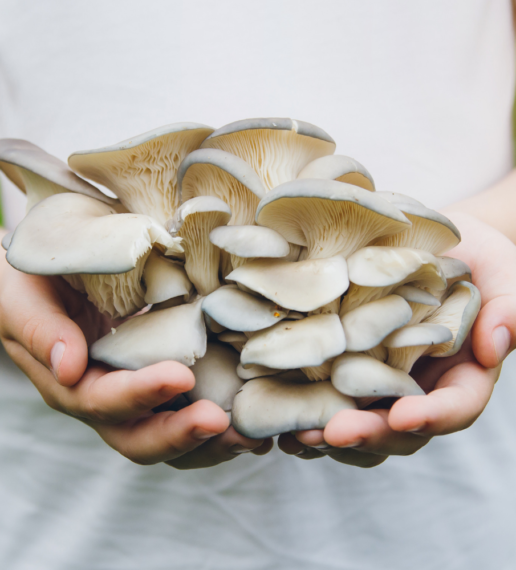Growing Blog
What’s the difference growing mushrooms indoors vs outdoors?
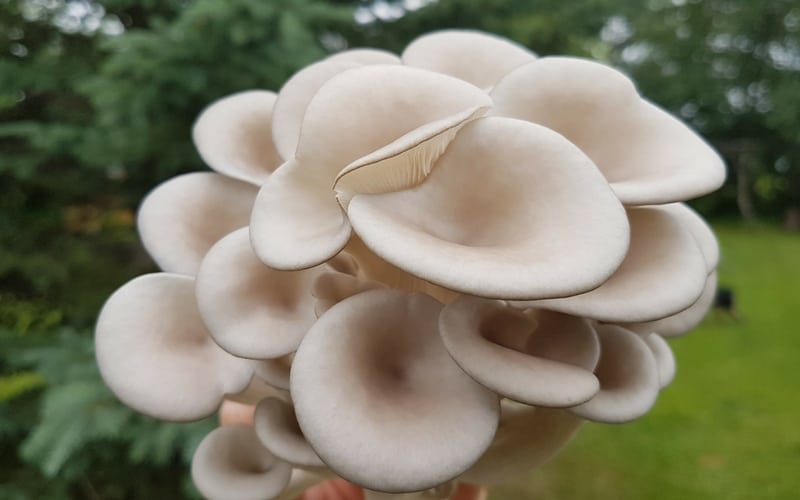
Mushrooms are affected by their growing environment in a big way. The most important elements for a mushroom growing environment are light, humidity and the ambient level of CO2 – less specifically, the amount of fresh air.
Different mushrooms seem to react to changes in these elements in different ways.
For example, common button mushrooms (Agaricus Bisporus, for those interested) don’t require light at all in order to produce normal looking fruits.
Oyster mushrooms, however, require a certain threshold level of light in order to fruit normally. Blue Oyster muhsrooms require a ton of fresh air to produce large fleshy caps, whereas Lions Mane mushrooms do just fine with higher levels of CO2.
Mushrooms grown outdoors can therefore look quite different than those grown indoors, mainly because it is difficult to duplicate outdoor conditions within a manufactured environment.
Fresh Air and CO2 Level in a Mushroom Growing Environment
Maintaining adequate amounts of fresh air within a grow room is one of the most difficult aspects of growing Oyster Mushrooms indoors.
Most Oyster Mushrooms normally grow on dead or dying trees. They use the inside of the tree for nutrition and for growing out the mycelial network. When the mushroom is ready to fruit, it will seek out an area of the tree with cracked bark or other opening. From here, a pin will for and will grow until it think it is will be available to properly disperse its spores.
It does this by detecting the level of CO2, which if low enough, would indicate that the mushroom has exited the tree and can form a cap to properly disperse its spores. .
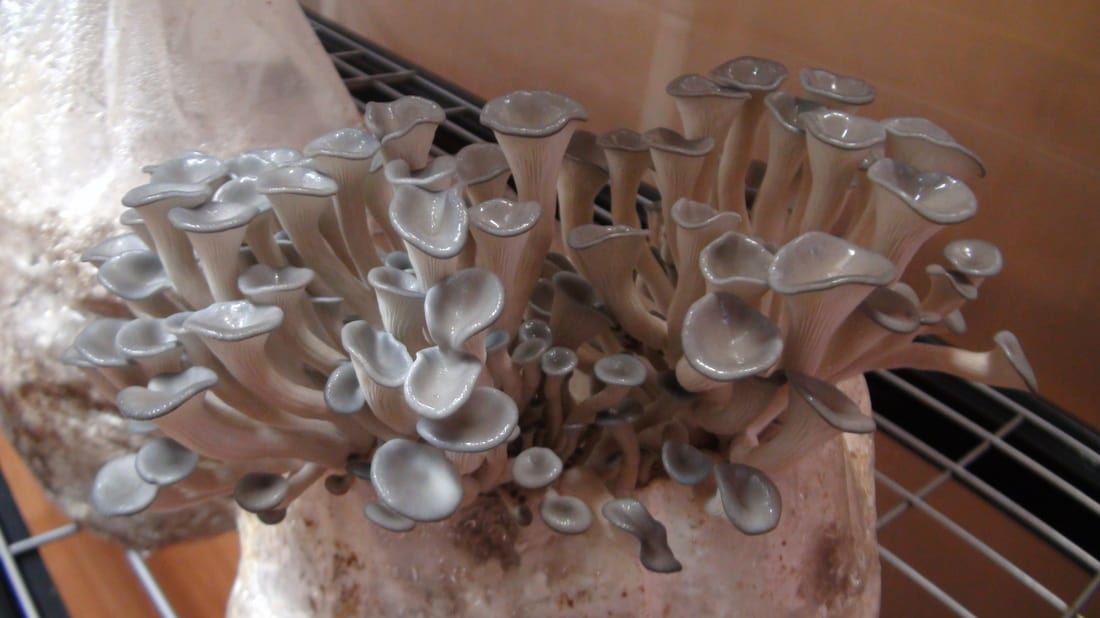
Blue Oyster Mushrooms Growing Indoors.
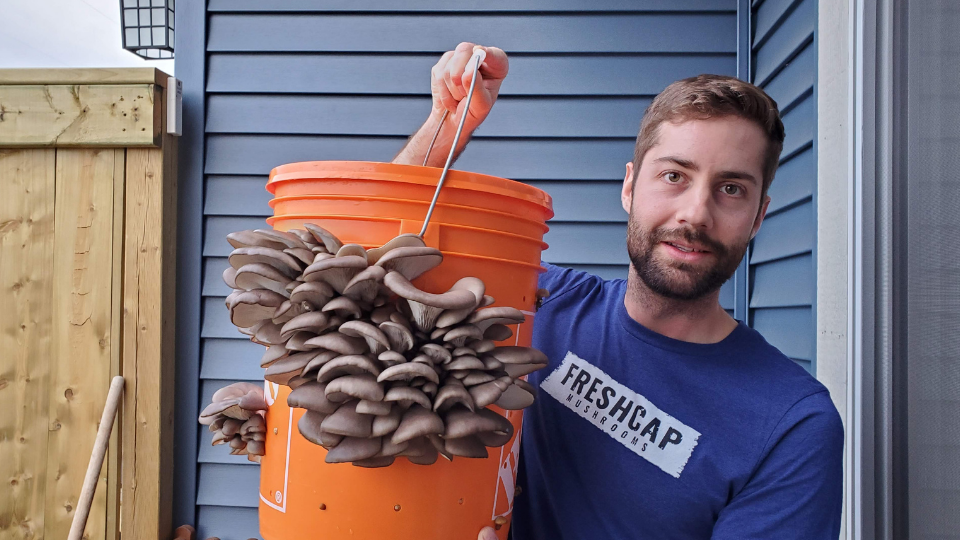
Genetically identical strain growing outdoors.
Indoor grow rooms can unintentionally have elevated CO2 levels if not enough fresh outside air is pumped into the grow room.
This can cause the mushrooms to form long stems and small caps. Oyster Mushroom stems are typically chewy and not as desired as the cap, hence growers try to get adequate amounts of fresh air into the grow room. The problem with this strategy, however, is the difficulty in maintaining adequate humidity with constant air exchanges.
One way around this problem is to precondition the air by bringing it up to the proper relative humidity before it is blown into the grow room.
This is not always easy to do at home.
When Blue Oyster mushrooms are grown outdoors, the CO2 buildup is negligible. The Mushrooms therefore form large shelf like formations with almost no stem whatsoever. The resulting harvest has less waste and meatier fruits.
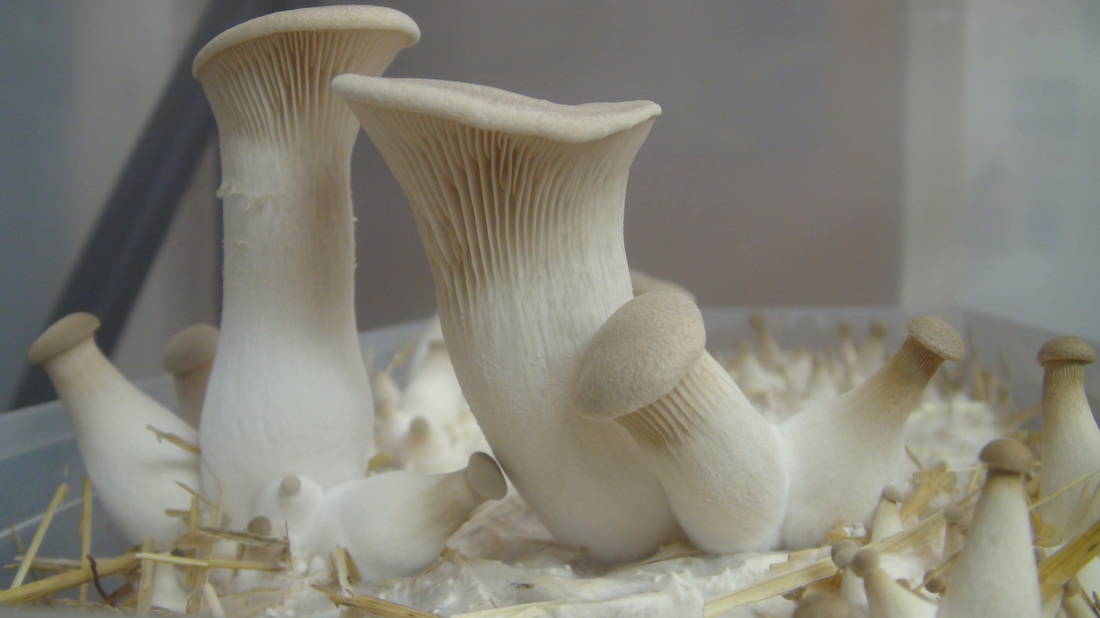
Indoor Grown King Oyster. Pale caps and fat stems.
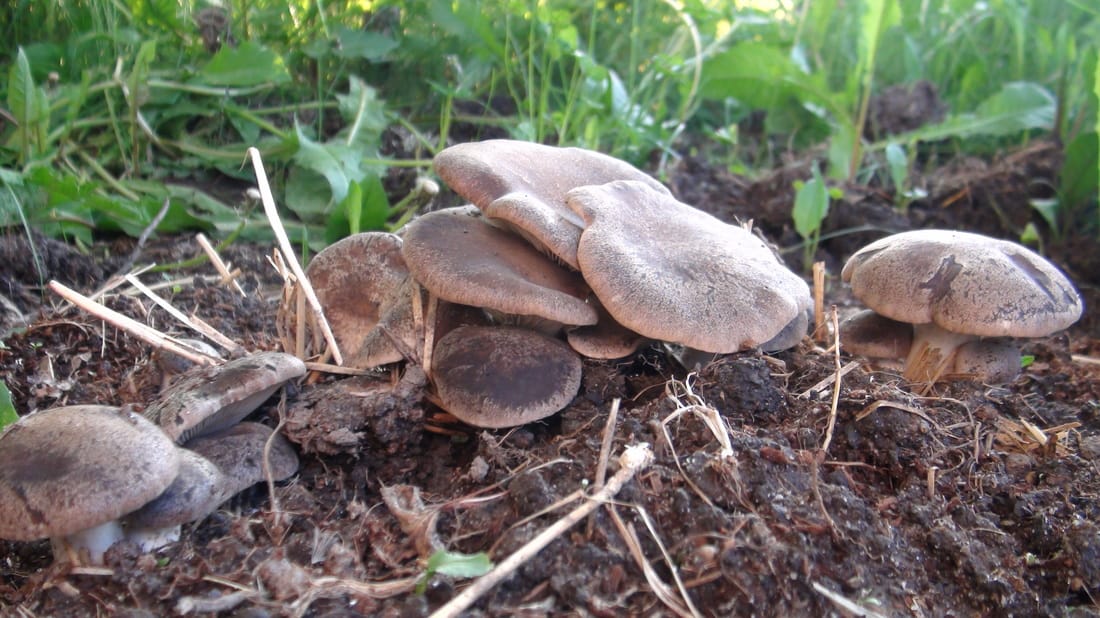
Genetically Identical Strain Growing Outside.
Some mushrooms are grown under these conditions on purpose. King Oyster Mushrooms, for example, are often grown in high CO2 levels, which cause the mushroom to have a large fat and long stem with a tiny pale cap. This is the typical King Oyster that you may find in your grocery store.
One advantage of this type of cultivation is that the resulting mushroom has a long shelf life and is quite durable, enabling it to be shipped long distances.
Many King Oyster mushrooms sold in North America are grown in Korea and shipped overseas. This would not be possible with other varieties of Oyster Mushroom. When this same mushroom is grown outside, it looks like a different species all together, with a short stem and a large gilled and drak brown cap. In my opinion, the garden grown King Oyster mushroom has much better culinary properties than the ones grown indoors. They are meatier and have a fuller flavor.
Light Requirements for Growing Mushrooms
As mentioned above, common button mushroom do not require light in order to grow proper fruits. Agaricus farms therefore can use stacked shelves to grow the mushrooms, and the only light that is required is for workers to see what they are doing. Most mushrooms, however, require a certain threshold of light to produce normal looking fruits.
The color of the mushroom is highly affected by light levels.
Some species of mushrooms can produce an albino fruit when grown in low light levels.
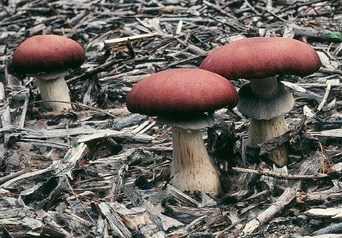
Some Mushrooms actually thrive in the sun light. One of these mushrooms is the King Strapharia. This mushroom is a perfect candidate for outdoor mushroom cultivation in your garden. It is sometimes called a “sun loving” mushroom, due to its ability to grow in direct sunlight.
Another name for it is the Wine Cap, due to its red/brown color. This mushroom is also unique in that is requires a biologically active casing layer in order to fruit. Because of these factors, it has largely avoided indoor cultivation on a commercial scale, but is nonetheless a perfect choice for a low maintenance garden grown mushroom.
Simple techniques can be used such as spreading spawn in with straw, wood chips and sawdust out in your garden and keeping moist.
The Book Growing Gourmet and Medicinal Mushrooms by Paul Stamets has great specific information on the light and fresh air requirements for most cultivated species. It is good to follow the guidelines from this book when trying to grow mushrooms at home.

